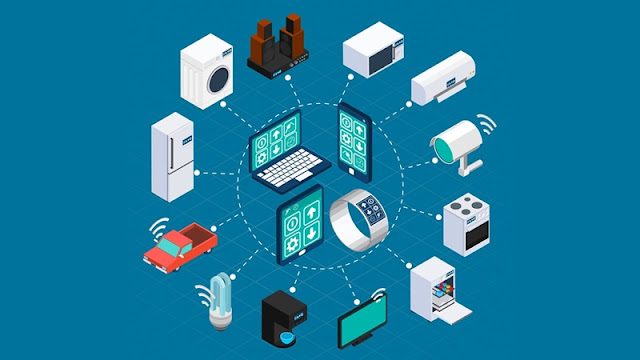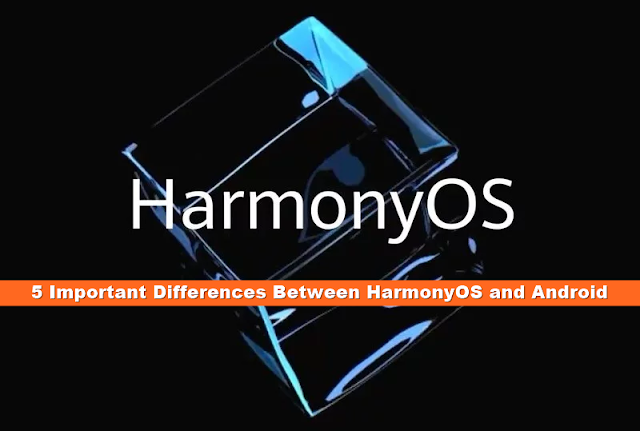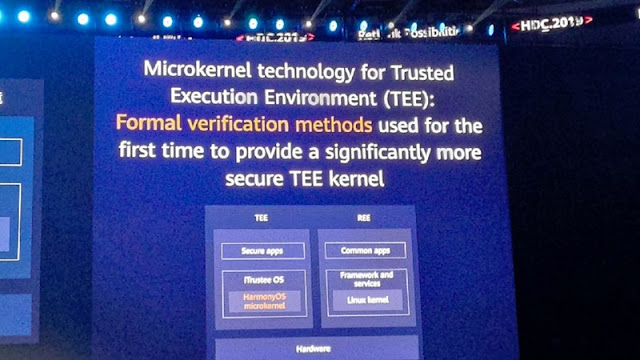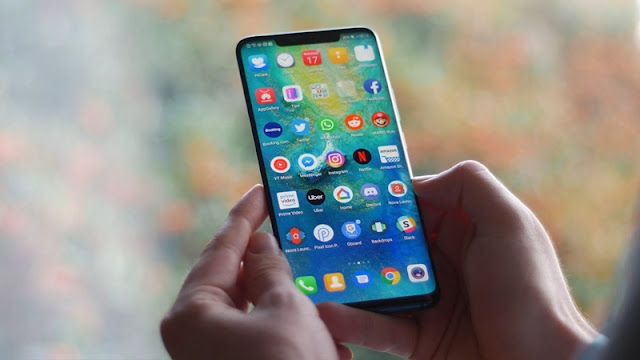The operating system HarmonyOS, introduced by Huawei last week, will be available everywhere, from smartphones to tablets, smartwatches to automobiles and smart home appliances.
HarmonyOS vs Android: What's The Difference?
Hey everyone, the operating system HarmonyOS, introduced by Huawei last week, will be available everywhere, from smartphones to tablets, smartwatches to automobiles and smart home appliances. Huawei still kills the ox and rests on Google, but he's looking at the throne of Android. So what are the differences between HarmonyOS and Android, what will await us?If you want to buy a phone right now, the options in the market are clear. You can see the smartphones of many American, Chinese, and South Korean companies on the shelves. So the market is not only monopolized by one country. However, the core software that allows those devices to work, for example, operating systems, is of United States origin.
Android and iOS have been our two options for smartphone for many years. After Microsoft's failure to Windows Mobile, the first name to challenge these two camels, was a matter of curiosity. That name was Huawei, which has been unable to sell phones in the United States for years due to the trade war between China and the U.S but increased its sales by 50% at the end of 2018. The company came out with HarmonyOS last week and creating a great expectation of competition.
Today we look closely at the differences between Android and HarmonyOS.
Also Read: 10 Facts You Need to Know About Huawei HarmonyOS
[post_ads]
Android has a Linux-based kernel, Huawei has written a brand new "micro-kernel" for HarmonyOS. And what does that mean?
Huawei's tries to develop an operating system date back to 2012. At that time, the competition between Android and iOS escalated, and the company set off. Although HarmonyOS is based on the work done in those days, its purpose is now different. The 2010s were the year of smartphones. The 2020s will be the Internet of Things era, and each device will require an operating system.
Huawei wanted to develop an ecosystem that could operate on almost any electronic device. For this purpose, HarmonyOS' micro-kernel did not receive from previously written architectures such as Linux. They completely produced their own kernel. It wasn't a problem for Android to use Linux because Google wasn't targeting Android in the 2020s.
Huawei's micro-kernel is much lower in size than Linux. That means that the codes will keep the operating system running will take up less space. Google will replace Android to Fuchsia, also wrote his own kernel. Huawei said HarmonyOS communicates between processors five times faster than Google Fuchsia.
The competition has already begun, as we understand the Fuchsia - HarmonyOS competition in the 2020s instead of iOS - Android (there is still no voice from Apple).
Also Read: Honor Vision TV will come with HarmonyOS, 55-Inch 4K HDR Smart TV!
Android's starting point was phones. HarmonyOS is becoming widespread with "objects":

Huawei, which will continue to use Android, has already pushed the button for the Internet of Things initiative. Android, the world's most widely used operating system in 2017, which became popular with smartphones in the early 2010s, will not meet our modern requirements in a few years. That's why Google is already working on Fuchsia OS.
Huawei says if banned from the United States, they can quickly switch all his phone to HarmonyOS in one to two days. Smartphones aren't, the real target, this part was just an emergency plan. Huawei has taken a step that brings artificial intelligence, the Internet of Things, and 5G-based technologies together. The company has designed its steps in this area until 2025.
Considering the unresolved tensions between the U.S. and China, we can add a little excitement if we evaluate the data. It is assumed that the Huawei Mate 30 and Mate 30 Lite, which is not yet Google Play certified, will be the first device to come with HarmonyOS.
[post_ads_2]
Hypothetically, it looks faster than Android:
Of course, it's too early to say, but we have some data about HarmonyOS and Android, which are diametrically different. Huawei seems to like the "distributed operating system" pattern and often uses it for HarmonyOS. With this report, it also makes it clear that it will be faster than Android.
Huawei argues that its “distributed” HarmonyOS can outperform Android on the fact that Android uses a lot of redundant code, an outdated scheduling mechanism and has fragmentation issues.
#HarmonyOS is built with a deterministic latency engine that gives a smooth interactive experience. That means latency is at a minimum; bringing fluid interactive experience to the maximum #HDC2019 pic.twitter.com/p9bnwNHJq6— Huawei Mobile (@HuaweiMobile) August 9, 2019
Huawei claims that it has resulted in up to 25.7% improved response latency and 55.6% improvement in latency fluctuation.It would be pointless to drown in technical details, but the distributed structure of HarmonyOS seems to work more efficiently with the timing mechanisms than Android. It means that theoretically, we can see a faster and more trouble-free operating system. That may change with the expansion of the operating system. We have to wait and see.
HarmonyOS does not have root access
What made Android so quickly spread was that it gave users "root" access to control their devices even more advanced. Using a device without all firewalls was fine to be able to install the desired application instantly. But when Android started doing this, none of us were as worried about security as we are today.Huawei states HarmonyOS will not offer root access. That means that the operating system will better protect both the device's hardware and the information in them. Because it targets almost all electronic devices connected to the Internet, it is obvious that there will be no serious obstacles when it comes to spreading. With so many devices operating systems, yes, unfortunately, we need security. Let's see how Huawei will present it.
Play Store for Android, AppGallery for Harmony. So can Huawei catch up with Google on the application?
Expands the world of apps/games that want to take over the world of smartphones and supports developers. Google and Apple are the strongest proof of this with the number of applications. Millions of applications from any developer in almost every subject you will need are at your service.
Huawei will do its best to move developers' apps to AppGallery, which will be available on HarmonyOS. Incentive campaigns, herpes revenues can be the first of these. It will also be very easy for developers to make the Android app compatible with HarmonyOS. It will be that AppGallery will be able to pass up with the Play Store in a short time. Huawei offered all the tools and SDKs for free to facilitate developers to do this.
Huawei requires a few years of struggle to reach up with Google, otherwise his work seems a little old. We won't notice much competition between Android and HarmonyOS. We're waiting for Fuchsia to see the flame swell. Because of this war, smartphones are just a product class. This war is now one of the greatest technology wars in history. Let us know what you think about HarmonyOS.



















COMMENTS